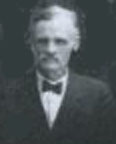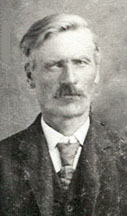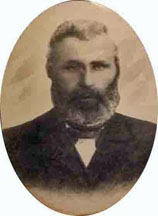My paternal line traces its roots to Nesna, Nordland, Norway, a small coastal town located a few miles south of the Arctic Circle that was home to the family for hundreds of years. That began to change in the late 1800’s when my ancestors joined the millions of European emigrants who crossed the Atlantic to begin new lives in the United States and Canada.
My great great grandparents, Isak Johan Larsen and Maren Christiane Andersdatter had eight children who survived childhood (listed below) and 56 grandchildren.
- Anton Edvard (b. 1845, d. 1885 in Nesna, Nordland, Norway)
- Lorentz Andreas (b. 1848, d. 1922 in Monroe, Snohomish, Washington, United States)
- Kristine Maria (b. 1850, d. 1923 in Fragaria, Kitsap, Washington, United States)
- Hans Emahus (b. 1853, d. 1932 in St. Paul, Ramsey, Minnesota, United States)
- Elias Nicholi (b. 1855, d. 1911 in Nesna, Nordland, Norway)
- Jacob Johan (b. 1858, d. 1931 in North Dakota, United States)
- Benjamin Nikolai (b. 1860, d, 1946 in Fort Ransom, Ransom, North Dakota, United States)
- Anne Elisabet (b. 1862, d. after 1903 in Norway)
Of this group of 64 descendants, 45 (70%) would live and die in the United States or Canada.
The exodus began with their son Jacob Johan. He was listed as the owner of two farms (Myklebostad and Nordbostad) in the 1886 Norwegian Land register, so he may have sold the farms to finance his trip. He traveled to Trondheim (a major port about 300 miles to the south), and departed on 16 May 1888 on the Wilson line ship Hero, just 7 months before his father (Isak Johan Larsen) passed away.
At that time, most emigrants from Trondheim sailed to Hull, England. Several million European emigrants flowed through Hull on their way to North America between 1848 and 1914. Their visit to England was usually brief and probably uncomfortable: they would remain on-board their ships until the train that would take them to their port of departure (such as Glasgow, Liverpool, London or Southampton) was ready: That train would transport them directly to their ship.
Few records documenting these transmigrations through Hull have survived. Norway is unique in that they documented, preserved (and later digitized) records of emigrant departures from their country. For more information about Hull see ‘Migration from Northern Europe to America via the Port of Hull, 1848-1914’ by Nicholas J Evans.

Next to depart was Benjamin Nicolai, who left Trondheim on 04 Sept, 1889 also traveling on the Hero (see ‘Benjamin Isakson: A Biographical Sketch‘). His wife (Eilerine Kristine Ingebriksdatter) would make the same trip on the Juno, departing on 10 June 1891 with her daughters Anna Ellisabet (3 years old) and Karen Aalberg (11 months). They apparently settled into their new life in North Dakota quickly: by 1901 Benjamin had homesteaded and obtained title to land in Lamour County from the US Bureau of Land Management, and 7 more children were born and raised there.
The Diary of an emigrant leaving Trondheim on the ship “Juno” in 1893 was not written by anybody in my family, but it does provide an interesting glimpse into what the trip from Norway to the US was like at this point in time.
Isak Martin Pedersson (son of Kristine Maria and Peter Andreas Larsen, who would themselves travel to the US in 1910) left Trondhiem for Lisbon, North Dakota on 18 May 1898 on the Tasso.
Ivar Anker Lorentssen (son of Lorentz Andreas) left with his wife Antonette Marie Olsdatter in 1901 (according to his record in the 1920 and 1930 US census). Their first child was born in North Dakota in 1902.

Hans Emahus (my great-grandfather) left his wife and 7 children behind when he made the trip in April of 1903. The Hertigruten began operating regularly scheduled shipping in 1893, so it is possible that he traveled south to Trondheim on one of these ships. He departed Trondheim on the 21st on the Allen line’s Tasso with his nephew Otto Kristian Lorentssen (son of his brother Lorentz Andreas).
The ship visited Kristiansund and Ålesund, reaching Bergen two days later. It then stopped at Stavanger before finally reaching Hull, England on April 28th or 29th, They traveled by train to Liverpool and arrived at the Riverside railway station, located near the present-day cruise terminal near the Princess Dock. His ship, the SS Ionian, departed Liverpool on April 30th, arriving in Quebec, Canada on May 10.
His stated destination was Englevale, North Dakota, a small town established in 1893 near Verona and Fort Ransom that has since ceased to exist. The ships manifest from Quebec lists several Canadian Pacific trains that transported passengers from the dock: it is likely that Hans took the train to Sault Ste. Marie (where he probably entered the United States) and continued on by train to join his brother Benjamin Nikolai (who had provided the funds for the trip from Norway) and his brother Jacob Johan, who was living with Benjamin Nikolai at the time of the 1900 Census.
His sons Ludvig Martin and Anton Edvard (my grandfather) departed on 24 February, 1904, on the Salmo for Hull, then traveled by train to Liverpool and arrived in Boston on 12 March 1904 aboard the Cymric. Hans’ wife (Inger Helene Andersdatter) and two daughters (Dena and Petra) departed Norway on August 20 of the same year on the Tasso and arrived in Boston on the S.S. Cretic on September 17. Daughter Olina departed 14 Feb 1906, also traveling on the Tasso: her journey took her to Hull, Liverpool and Halifax, Nova Scotia, Canada before she joined the family in North Dakota. Two daughters would remain in Norway: Kristine Antonette and Marie Albertine.
Leonard Pedersson (another son of Kristine Maria and Peter Andreas Larsen) left Trondheim for Lisbon, North Dakota on 24 February 1904 on the Salmo.
Elias Nicholi left Trondheim on the Salmo on 17 October 1906, 11 months after the death of his mother (Maren Christiane Andersdatter, who was living with Elias in 1900 according to the census records). I believe that he was married to Anna Mathea Eliasdatter and had a daughter (Elise Marie Bang) at the time but I have been unable to find any additional information about them.
The Jacob Johan trail picks up again in 1900: He is listed on the 1900 census living with his brother Benjamin Nikolai. According to Norman Lorentzsen (his nephew), he moved to North Dakota from Washington, bought some property from his brother Benjamin Nikola, and married Emma Peterson. Their children began to arrive soon thereafter: First born were daughters Erna (born about 1912) and Elnor (born about 1914), followed by a son Edwind (born about 1916), and another daughter (Marie, born about 1918). All of them were listed in the 1920 census, living in Black Loam Township, Lamoure County. Arnold, a second son, was born about 1925, and the family (with the exception on Erna) still lived on the farm at the time of the 1930 census.
In 1909, Benjamin Nikolai returned to Norway to visit for the winter (see My Father: Ludvig Johan Angel Mortensen Mehus). He apparently returned early in 1910 (he was back home on April 27 according to the US Census records). On May 20, 1910 his sister Kristine Maria, her husband Peter Andreas Larsen, and others from the Nesna area traveled on the Oscar II, arriving at Ellis Island on May 31. Kristine Maria’s sons (Isak Martin, who emigrated in 1898, and Leonard, who emigrated in 1904) and daughter (Martha Dorthea, who emigrated in 1909) were already in the US. Her oldest daughter (Eva Johanna) arrived at Ellis Island on 18 June 1916 (ship: Bergensfjord), but the youngest (Kristine Antonette) remained in Norway, where she died in 1974.

Lorents Andreas departed Trondheim on 08 February 1915. His wife (Lisabeth Anne Eriandsdatter) had died the previous year, and sons Ivar Anker (emigrated in 1901) and Otto Kristian (emigrated in 1903) were already in the US. Son Hilmar Krough Moeller died in Canada in 1960 and son Wilhelm Andreas and daughter Kaspara Jonette apparently remained and died in Norway.
Revised 19 December 2022

